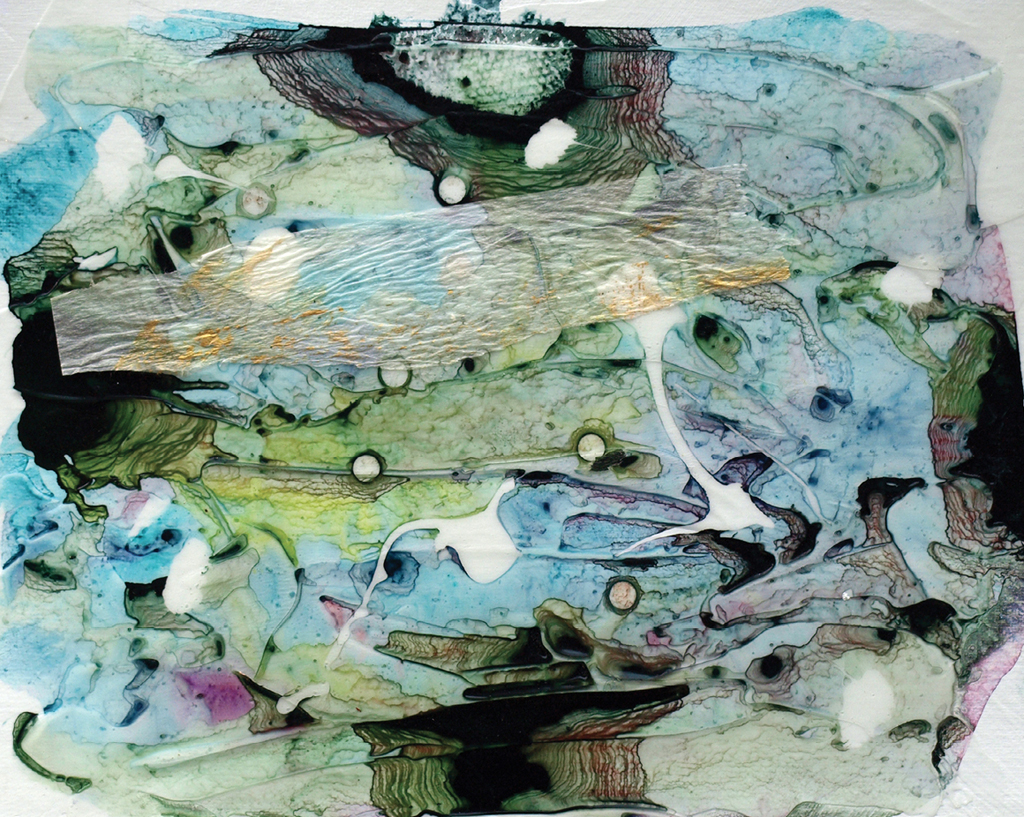

Acrylic offers a wide variety of painting possibilities. This example combines Techniques 33, 34 and 41.
The techniques in this book are meant to be self-explanatory. Yet the more we know about the paint and medium the better we can play around with instructions, experimenting and changing them to suit our own needs. This first section is dedicated to exploring essential aspects of acrylic for the painter. Reading through this section will hopefully equip you with helpful ideas and tips allowing more ease and success with the fifty techniques that follow.
In workshops I often use the following analogy to help students understand that acrylic is not “just paint.” For me, acrylic paint is to all other mediums as Photoshop is to a typewriter. Imagine only using Photoshop to type a letter! We would be missing out on the vast possibilities that Photoshop has to offer. It’s the same with acrylic. To approach acrylic only as if we are painting with oil or watercolor would inhibit us from its broad range of painting potential. To help explain this concept, I’ve created a chart covering an overview of acrylic painting. For those who don’t like charts, keep reading the pages immediately following for an explanation of each facet of the chart.

